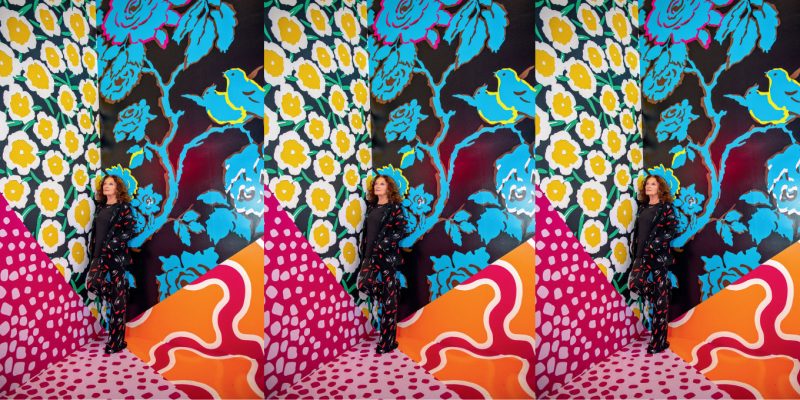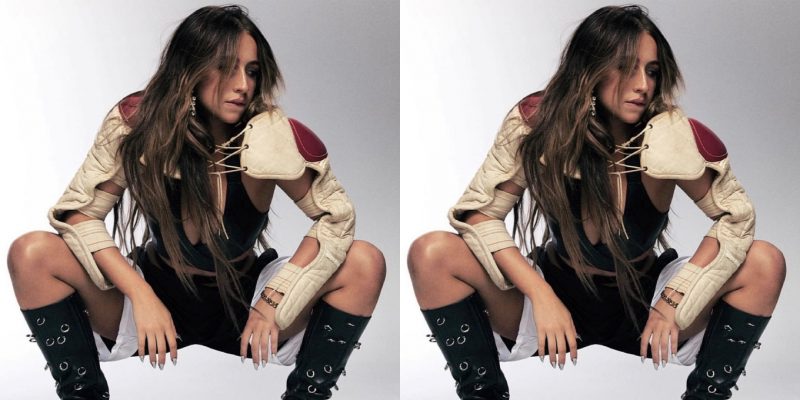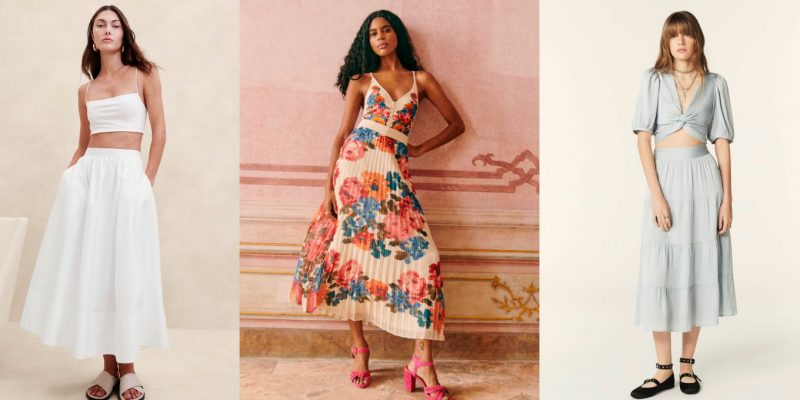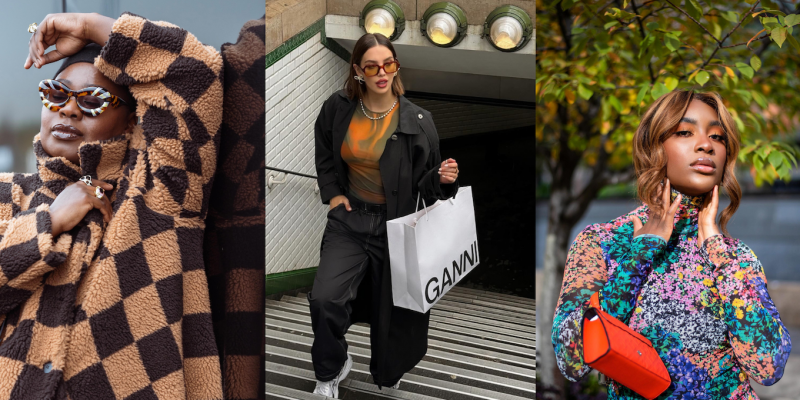Fashion
Patricia Field Does Everything for the Love of Fashion
The costume designer's autobiography is an audacious style odyssey.
by : Wendy Kaur- Feb 27th, 2023

Field (Centre) At Boy Bar, New York City, 1992 (Tina Paul)
Days before my conversation with Patricia Field about her new memoir, Pat in the City, the costume designer, who’s famed for her sartorial signature on Sex and the City and The Devil Wears Prada, had just finished styling Canadian actor Kim Cattrall for her latest project. “I have a long-standing relationship with Kim,” she says via Zoom from her home in New York. “We met on SATC. Kim called me because she’s doing a [Netflix] series in Toronto called Glamorous [in which] she plays a retired model who owns a cosmetics company.” At the time, Field had just flown in from working on the wardrobe for Emily in Paris. “I felt like I needed to take a breath, so Kim and I would FaceTime instead of having me go to Toronto. She lives in New York, so she would also come to the city when she wasn’t on camera for a day or two. It was a great experience. I love her.”
The 81-year-old icon’s accolades aren’t just for her work in film and television, though. For 50 years, Field’s eponymous New York boutique—initially on Washington Place with later incarnations on Eighth Street, West Broadway and Bowery Street until she closed in 2016—was hailed as a destination for avant-garde style. In the ’80s, the store was the place to put together a look for landmark nighttime haunts such as Studio 54, Paradise Garage and Boy Bar. When she closed up shop almost seven years ago, Field felt like many people wanted to know her personal story.
Pat in the City—a play on the name of the sexy HBO series that solidified Field’s status as a Hollywood costume designer—is filled with engaging anecdotes about her glamorous gigs for the big and small screens as well as endless personal stories, including some about growing up around a group of feisty Greek women, hanging out with artists like Andy Warhol and her long friendship with designer Halston. Amusing tidbits include the time the late John F. Kennedy Jr. was kicked out of her shop for a less-than-charming comment and the time she drove to New Jersey to apologize to Beyoncé. The downtown shop served as a larger-than-life character in its own right: From the time it opened, in the ’60s, it was a safe space for trans people to express themselves and a platform for emerging designers and other arbiters of taste.
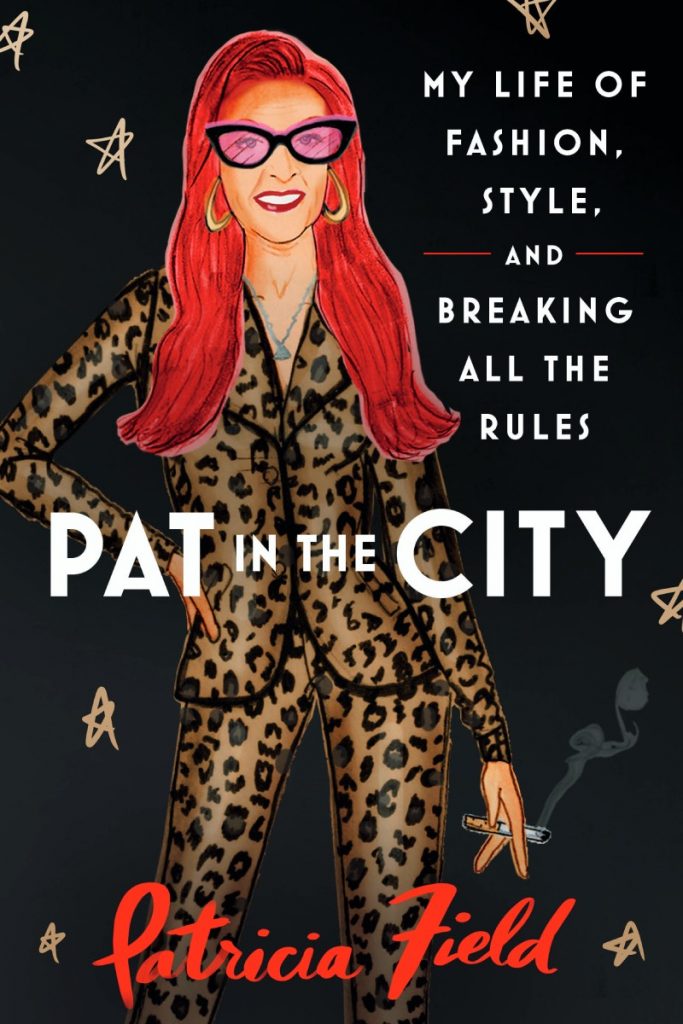
When Field was a child, her fashion persona was shaped by her hard-working and fiercely independent Greek mother. “My mother’s [dry-cleaning] business was on the Upper East Side, and she would buy me cashmere sweaters from Bloomingdale’s and Madison Avenue—her own style was very tailored and Sears, Roebuck,” she says with a laugh. But Field felt more at home in the head-to-toe cowgirl ensemble gifted to her by her vivacious aunts, who knew how much she adored Roy Rogers and the Lone Ranger. The long-sleeved Western shirt had smile-shaped breast pockets and a pointed collar, and it came with a fringed suede bolero vest and matching miniskirt. The outfit was completed with a pair of classic square-toed soft-leather cowboy boots. “I never took it off,” writes Field in the book. “Even at five years old, I already understood that fashion and costume were one and the same.”
Although she indulged her mother’s penchant for dressing her in the structured style of the ’50s, by the time the space-age ’60s struck, Field—then attending New York University—was living by her own fashion rules. She kicked her love of costume themes up a notch with futuristic looks introduced by designers like Pierre Cardin and André Courrèges: White leather go-go boots and silver astronaut-like accessories became her go-tos, as did helmet-style hats and goggle sunglasses. Yet it never dawned on Field to study business or fashion because these two disciplines were part and parcel of her personality. Instead, she took philosophy courses and worked in retail, where she stood out for her fashion sense and her initiative on product placement.
Field opened her first boutique in 1966 with her then girlfriend, Jo Ann, on the NYU campus and called it Pants Pub because it resembled an Irish bar. She wanted a hip and happening place that catered to trendy women and reflected what she calls her “lifelong love affair with pants.” She felt that her two New York City retail jobs out of college—at discount department store Alexander’s and then as an assistant buyer at Petrie Stores—gave her the confidence and momentum to go her own way and be the one in charge. Still, “it was one thing to buy thousands of blouses for 400 stores across the Midwest and another to go into a factory for half a dozen pants to stock a shoebox of a store,” she writes.
Five years after Pants Pub opened, Field felt that it had outgrown its physical space as well as its name—and her name-sake store was born on Eighth Street in 1971. The makeover included a move away from the mod look of the ’60s in favour of wares that were decidedly “decadent and devious.” She pushed past the hippie trend and looked to disco instead and was taken with New York designer Alice Blaine’s pleated high-waisted gabardine trousers. Because the flashy era encouraged women to invest more in their wardrobes, shopping trips to Paris compelled Field to buy more designer merchandise. On other European excursions, she sourced not only clothes but also unusual accessories and cosmetics from brands such as Kryolan, a German theatrical-makeup line that couldn’t be found anywhere in the city except at Patricia Field. “We had a matte-red lip colour from Shiseido made from real crushed flower petals,” she writes. “You had to dip your brush in the water and paint the wax-based pigment onto your lip. Patricia Field became part of a small constellation of places pushing the boundaries of fashion.”
The store also began to attract a new class of clientele: Singer-songwriter Patti Smith was a regular and purchased outfits there for her performances. As the business grew, Field made it her mandate to nurture the talent of young designers. She carried the creations of up-and-comers like Carmel Johnson-Schmidt, Millie Davis and Isabel Toledo. She bought Toledo’s very first collection—which had been presented at nightclub Danceteria in 1984—for her shop, and 25 years later, Toledo would go on to design the yellow inauguration dress worn by former First Lady Michelle Obama. “Patricia Field was a curated buffet of many different looks at many different prices,” writes Field. As the store became famous, stars like Madonna and Foxy Brown would come in. “[The clientele] developed in an exciting and artistic way,” she says.
Field stepped into costume design in the mid-’80s on the suggestion of Candy Pratts Price, who was the fashion director at Harper’s Bazaar at the time. Prior to working in editorial, Pratts Price had been a window dresser for French luxury shoe brand Charles Jourdan and later for Bloomingdale’s. When she was approached by Universal Studios about a psychothriller, Lady Beware—which centred on a window dresser for a Pittsburgh department store—because the film’s director, Karen Arthur, was looking for a costume designer, Pratts Price suggested Field. The gig led to Field styling a string of films, including Crime Story and 1995 romcom Miami Rhapsody, which starred none other than Sarah Jessica Parker. The two instantly hit it off over their compatible styles. “For that film, she wanted to wear the tight, skinny T-shirts that hit right at the waistline and were all the rage in the ’90s,” recalls Field. Even though the film’s director, David Frankel, didn’t go for the idea at first, Parker stood firm and won him over.
It was Parker who was responsible for getting Field the role of costume designer on SATC. The cast weren’t happy with the one they had, and Parker recommended Field to showrunner Darren Star. “I brought in this book [about] Bettie Page,” says Field, referring to the 1950s pin-up model. “I told him not to take it literally but that it was an example of what I found interesting from the standpoint of a woman’s relationship with her sexuality. I wanted to expose him to the idea for the show, and I think he understood what I was saying.”
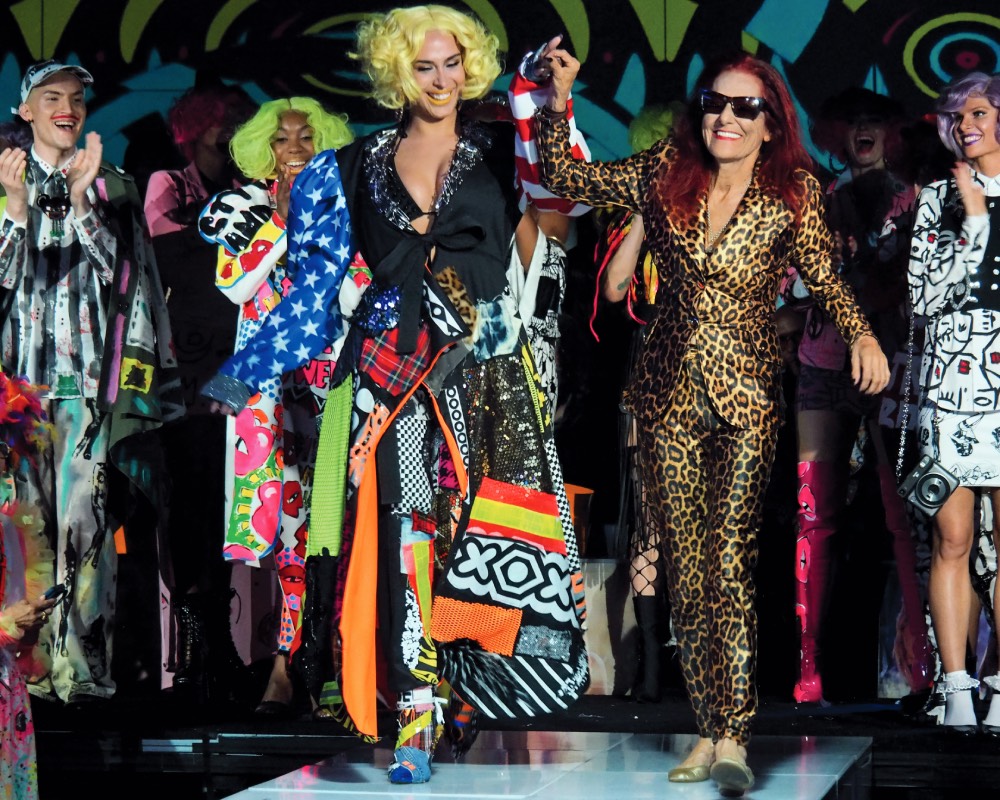 Field At The Artfashion Runway Show At New York Fashion Week, 2019 (Tina Paul)
Field At The Artfashion Runway Show At New York Fashion Week, 2019 (Tina Paul)The now iconic white tiered tulle skirt she found in a five-dollar bin at a midtown fashion showroom for the opening sequence was another story. “Darren is a businessman and a man of many talents, but he isn’t a fashionista,” says Field. “He didn’t get it.” Parker fell in love with the idea of pairing the tutu with a feminine take on a Marlon Brando-style tank top. “She understood it. She got the fashion, and it was a great relationship.” Star eventually saw the point Field was trying to make: The tutu emphasized Carrie Bradshaw as the modern epitome of the princess syndrome.
Even though Cattrall’s character was conceived of as the “sex girl,” Field didn’t want her style to embody a stereotype. Instead, she saw Samantha Jones as more of a designer seductress. Creations by Giorgio di Sant’ Angelo—the designer who influenced the looks of a number of ’90s labels, like Calvin Klein and Donna Karan—fit the bill for being “body conscious and elegant.” She took Cattrall on a field trip to Allan & Suzi—a legendary designer-consignment store that had a large Sant’ Angelo collection—as a way to hone in on the character’s image and bond with Cattrall at the same time. Field felt that Samantha’s wit was a reflection of Cattrall herself. “I would go into her dressing room and on her TV would be all of these old-time movie stars like Mae West—the funny ones,” she says. “They inspired her.”
When Field reached out to luxury labels to dress the show’s first season, they gave her the brush-off. “It was a brand-new show and unknown,” she says. By the second season, she noticed a seismic shift. Rome-based fashion house Fendi had introduced the “Baguette” bag as part of its fall collection, and Field saw it as a potential prop with purpose. The economy-size shoulder bag was akin to a clutch: It could carry the bare necessities and still be slung over the shoulder so that one’s hands were free to light a cigarette or hail a cab—two things Carrie Bradshaw did on a regular basis. To Field’s surprise, Fendi told her that she could have her pick of the many variations of the bag. Other labels followed suit. “Once the show was on a roll, everything changed.”
After the meteoric rise of SATC, part of Field wondered if her costume career would ever see the same success again. But the fashion fates came calling—this time for a film called The Devil Wears Prada. “When I heard it was with Meryl Streep, I said ‘I’m there,’” she recalls with amusement. “I had long admired her. I knew I could have fun with her for the role.” Field loved the idea from Streep’s team that her hair be white for the film, but the higher-ups automatically associated the look with old age. “In the end, I said to Meryl that she had to go in there and tell them [what she wanted]. She took care of it.”
“I don’t sell fashion. I sell ideas.”
Now, 17 years later, Field is still breaking fashion rules. When she signed on to do Emily in Paris, she insisted that Lily Collins’ character wear hats despite frustration from the lighting team.
“I love hats, but the problem with them in film and TV is that they block the lighting and cast a shadow on the face,” she says. A believer that hats are the punctuation of an outfit, Field made friends with the show’s director of photography and explained her philosophy so that she could keep them front and centre.
After closing her famous store, Field was still constantly coming across so much unique new talent, and she felt the need to exhibit it all. In 2018, she opened the Patricia Field ArtFashion Gallery, where she continues to sell the creations of cutting-edge designers. The space has a focus on wearable art that is made to order, handcrafted by a select group of artists and curated by Field. The art boutique is also an ode to nostalgic pieces from her past. “To this day, the ‘Carrie’ necklace is the top-selling item in my gallery, followed by tutus,” she says, referring to the nameplate necklace she originally had made for Parker’s SATC character at a little jewellery shop on Canal Street.
When it comes to acknowledging her own identity, it took Field a long time to see herself as an artist. While she had always been drawn to artistic types, she had never thought the label applied to her. “I always considered myself more of a businesswoman,” she says. Not one to entertain passing fads, Field has preferred to live in what she calls “the intellectual world of fashion.” Her tag line? “I don’t sell fashion. I sell ideas.”
Read more:
The Most Instagrammable Outfits from Emily in Paris
Carrie Bradshaw’s 20 Most Iconic Looks
Everything We Know About Season 2 of And Just Like That…
Newsletter
Join our mailing list for the latest and biggest in fashion trends, beauty, culture and celebrity.
Read Next

Fashion
Are Fashion Brands Getting Greener?
While the fashion industry is making a lot of noise about being more sustainable, a closer look shows that its earth-friendly commitments are often more illusion than reality.
by : Marouchka Franjulien- Apr 19th, 2024

Beauty
What Beauty Packaging Is Actually Sustainable?
We sought out leaders in the field to help us get to the bottom of the blue bin once and for all.
by : Victoria Christie- Apr 19th, 2024
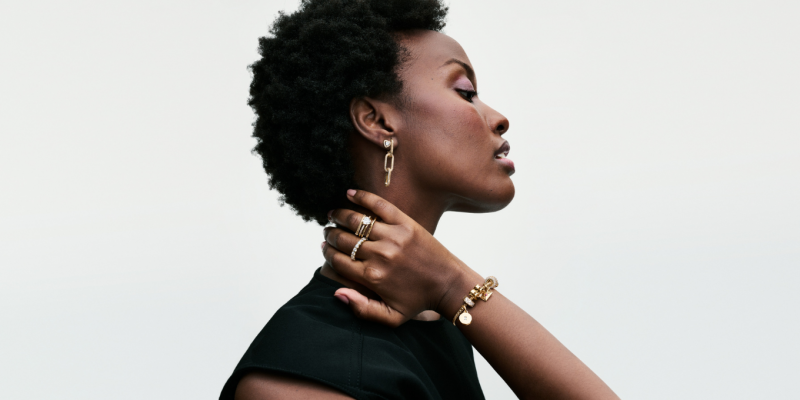
Fashion
This Jewellery Brand Has a Whole New Look And It’s Everything
Here are the seven pieces we’re coveting.
by : ELLE Canada- Apr 10th, 2024

